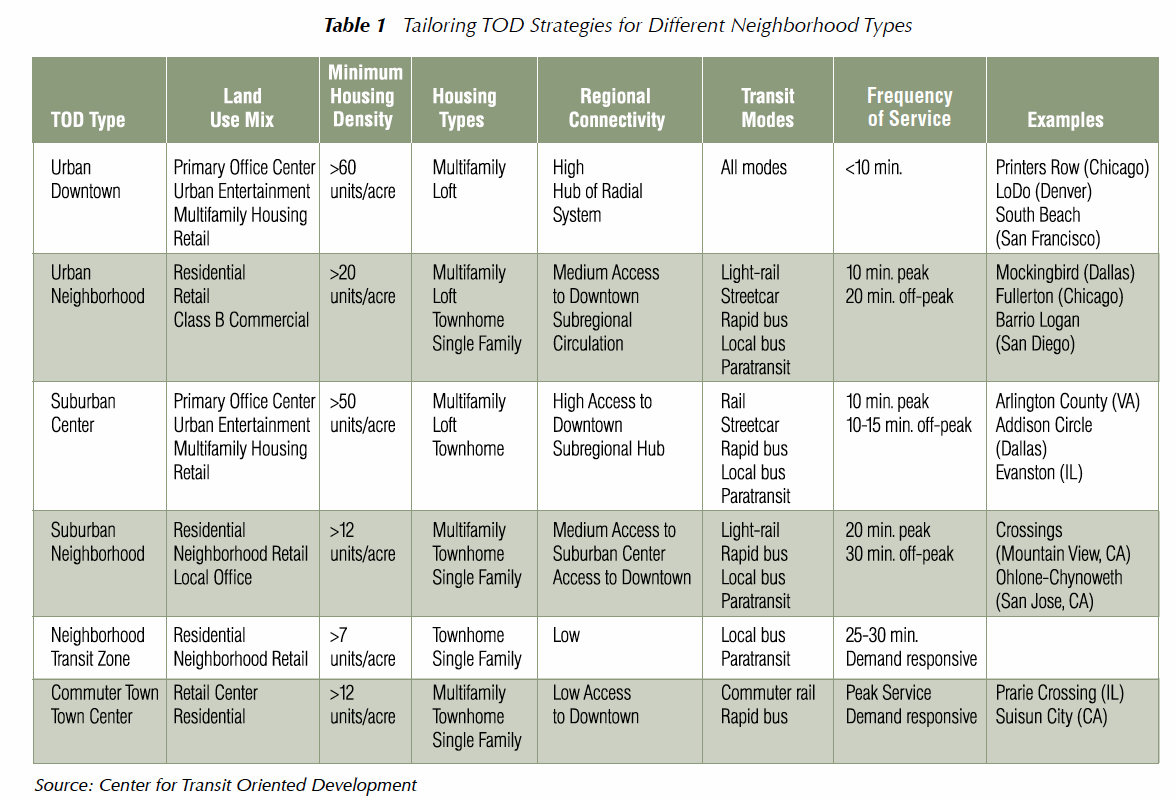RECONNECTING AMERICA
Written by Allison Brooks
Transit-oriented development (TOD) is a community development model focused on nurturing healthy people and places and better connecting them to one another through a robust, “multimodal” transportation network. At its core, TOD is about connecting, or reconnecting, the fabric of our communities— imagine a quilt, if you will—where neighborhoods and places of varying shapes, colors, sizes and textures are integrated into a vibrant and cohesive region. Implementing equitable TOD involves rethinking the current paradigm, where a person’s zip code can determine important outcomes such as educational attainment or employment opportunities.
To that end, fostering TOD requires collaboration and coordination among a varied set of actors from different disciplines. These different actors operate at all scales in a range of capacities including transportation and planning, elected officials, non-profit organizations, community-based activists, , for-profit and non-profit developers, financial institutions, the philanthropic sector, and service providers, to name a few! They come from fields such as transportation, community development, economic development, education, business, health, labor and the environment, among others. Given the wide range of actors and disciplines that need to be engaged in the TOD process and the variety of places and conditions where development can occur, TOD is a complex community development model to implement.
But, at the same time, the range of benefits that can be realized by optimizing the symbiotic relationship between public transportation and comprehensive community development is very real, particularly for low and moderate income (LMI) individuals and working families. Some of these benefits include:
- Improved access to job centers and economic opportunity;
- Expanded mobility choices that reduce dependence on the automobile, reduce transportation costs and free up income for other purposes;
- Reduction in neighborhood isolation and concentrated poverty across a region;
- Walkable communities that accommodate more healthy and active lifestyles;
- Reduced vehicle miles traveled (VMT) and thereby lowered greenhouse gas emissions;
- Reduced dependence on foreign oil;
- Potential for added value produced through increased and/or sustained property values where transit investments have occurred, which can be invested back into the community.
In recognition of these potential benefits, TOD has gained traction over the last ten years and is being embraced by federal agencies like the Department of Transportation (DOT), Housing and Urban Development (HUD) and the Environmental Protection Agency (EPA). DOT, HUD and EPA recently formed the Interagency Partnership for Sustainable Communities and have demonstrated a commitment to investing in equitable TOD at levels that can truly bring it to scale across the country. The Partnership also provides resources and tools to coordinated regional efforts that have introduced innovative approaches to advance equitable TOD
goals around the nation.
The purpose of this article is to define TOD, introduce the concepts and principles behind the term, and to present strategies for implementing successful TOD initiatives, especially those that benefit LMI individuals and communities.
Download full article (PDF): Weaving Together Vibrant Communities
About Reconnecting America
www.reconnectingamerica.org
“Reconnecting America is a national non-profit organization that is working to integrate transportation systems and the communities they serve, with the goal of generating lasting public and private returns, improving economic and environmental efficiency, and giving consumers more housing and mobility choices.”
Tags: Allison Brooks, Reconnecting America, Surdna, Surdna Foundation, TOD, Transit-Oriented Development







 RSS Feed
RSS Feed
This summary, as well as the underlying article, are well-stated, concise descriptions of transit-oriented development. We would suggest also that community actors considering the advantages of a TOD consult early and often with the local government having land use and zoning jurisdiction. Complications in that arena certainly can curb enthusiasm and slow the already labor-intensive process of coalition-building and finding unusual combinations of partners as described in the article.